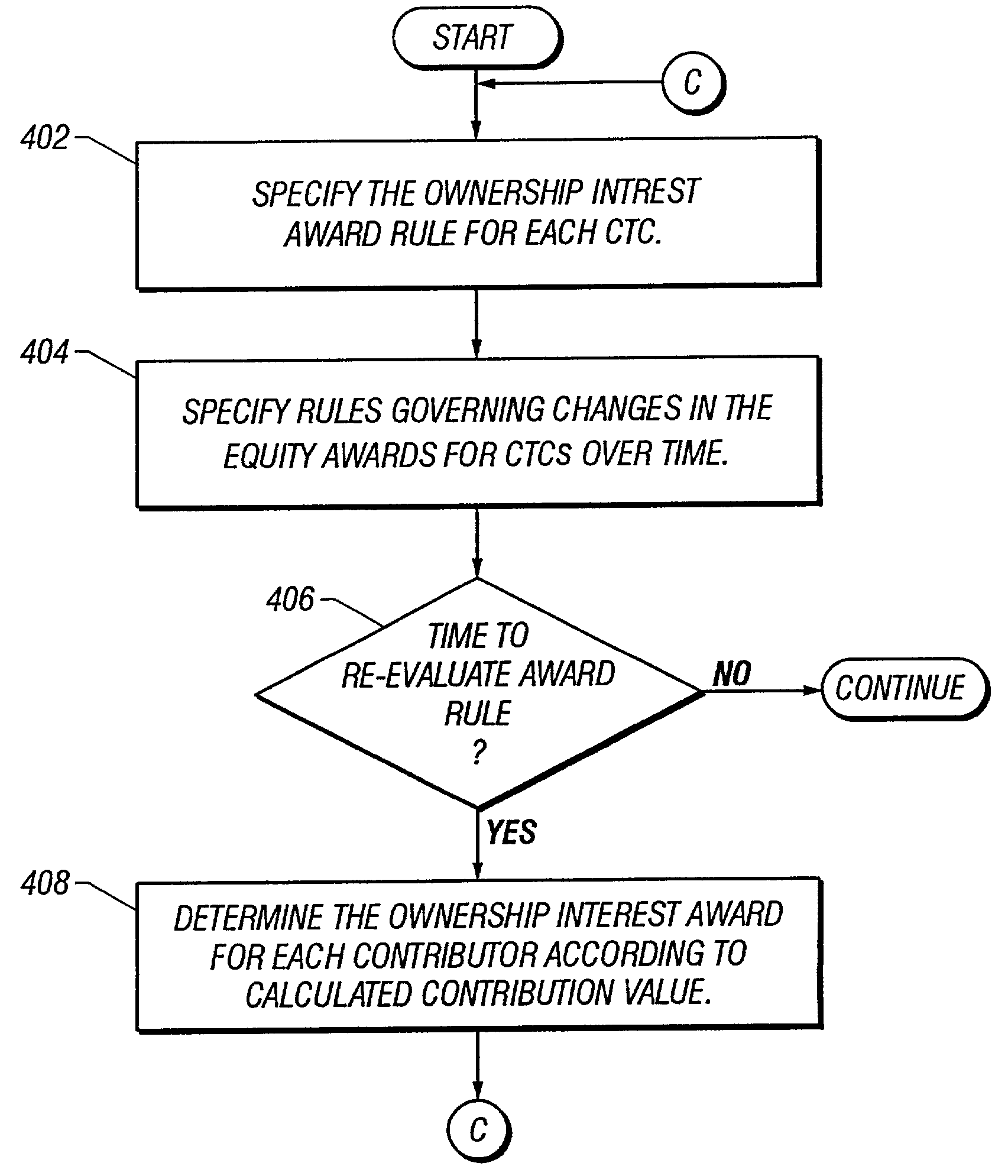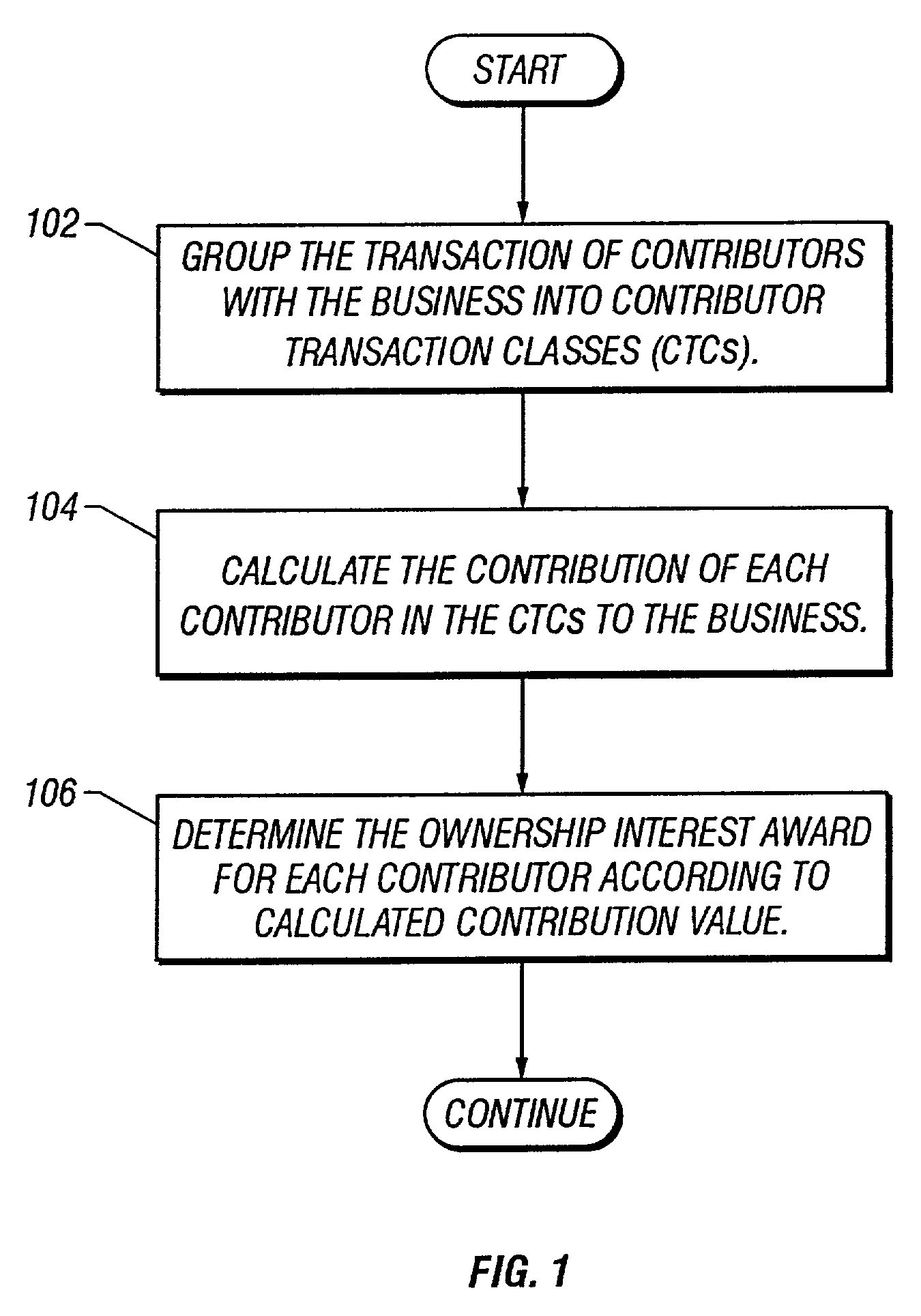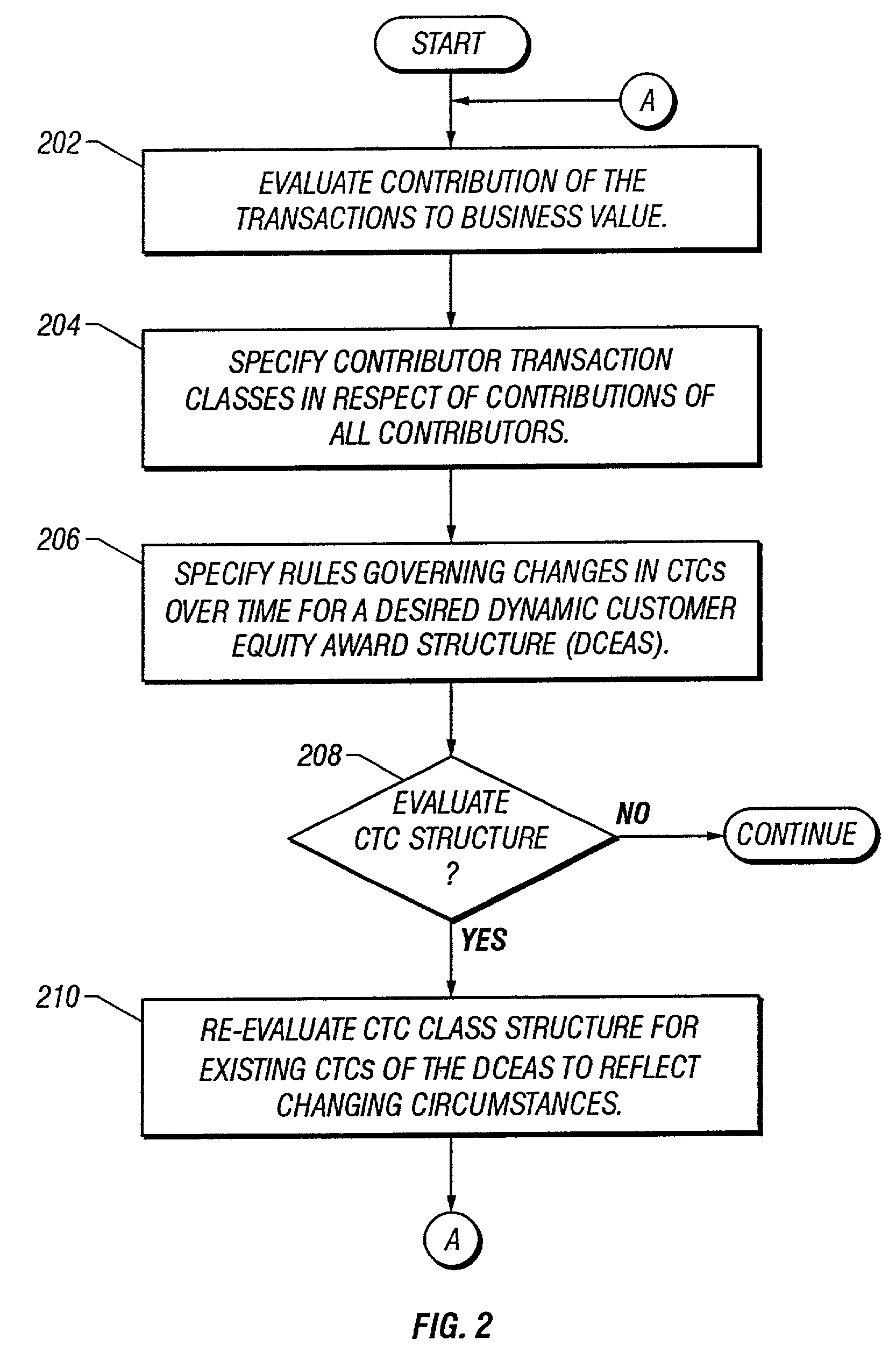Dynamic determination of ownership interest based on contribution
a technology of contribution and ownership interest, applied in the direction of instruments, finance, data processing applications, etc., can solve the problems of less precise, consistent, accurate, and difficult to create and manage employee stock option plans, and the implementation of customer award plans is also difficul
- Summary
- Abstract
- Description
- Claims
- Application Information
AI Technical Summary
Benefits of technology
Problems solved by technology
Method used
Image
Examples
example 1
[0076]Assume that firm A is a market-making firm that trades two types of goods, X and Y. Assume that the firm has defined two CTCs, one for trades of good X and the other for trades of good Y, and has chosen trading volume, which may be measured either by dollar volume or units traded, as its performance metric for each CTC. Sample equity award rules for each CTC may specify that the CTC will be allocated a defined percentage of the ownership of the firm, such as 10% (comprising the aggregate equity award for the CTC), and must also specify a procedure for allocating this aggregate amount of equity to the individual contributors of the CTC, for example based on the proportion of the total trading volume in the CTC which they contribute. Alternatively, the equity award rules for the two classes may specify a procedure for dynamically allocating a defined total percentage ownership of the firm, such as 20%, among the two CTCs based, for example, on the relative trading volumes in eac...
example 2
[0077]Assume that firm B sells products that become more desirable to its contributors as they become more widely adopted. For example, it may offer products that include a technology that will become a standard if widely adopted, or a new fashion that may or may not become widely popular. To encourage the early adoption of its products, the firm has chosen to establish CTCs for each product at its launch, and has defined equity award rules designed to award early adopters of the products. For example, the equity award rules may allocate equity to individual contributors within each CTC based on both the number of units the contributor buys and when they buy them, measured either in time, by cumulative units sold prior to their purchase, or some combination of both measures. To encourage early adopters, the equity award rule may specify the amount of equity to be awarded as a declining function of the date or order of purchase. The equity award rule may also specify the aggregate am...
PUM
 Login to View More
Login to View More Abstract
Description
Claims
Application Information
 Login to View More
Login to View More - R&D
- Intellectual Property
- Life Sciences
- Materials
- Tech Scout
- Unparalleled Data Quality
- Higher Quality Content
- 60% Fewer Hallucinations
Browse by: Latest US Patents, China's latest patents, Technical Efficacy Thesaurus, Application Domain, Technology Topic, Popular Technical Reports.
© 2025 PatSnap. All rights reserved.Legal|Privacy policy|Modern Slavery Act Transparency Statement|Sitemap|About US| Contact US: help@patsnap.com



